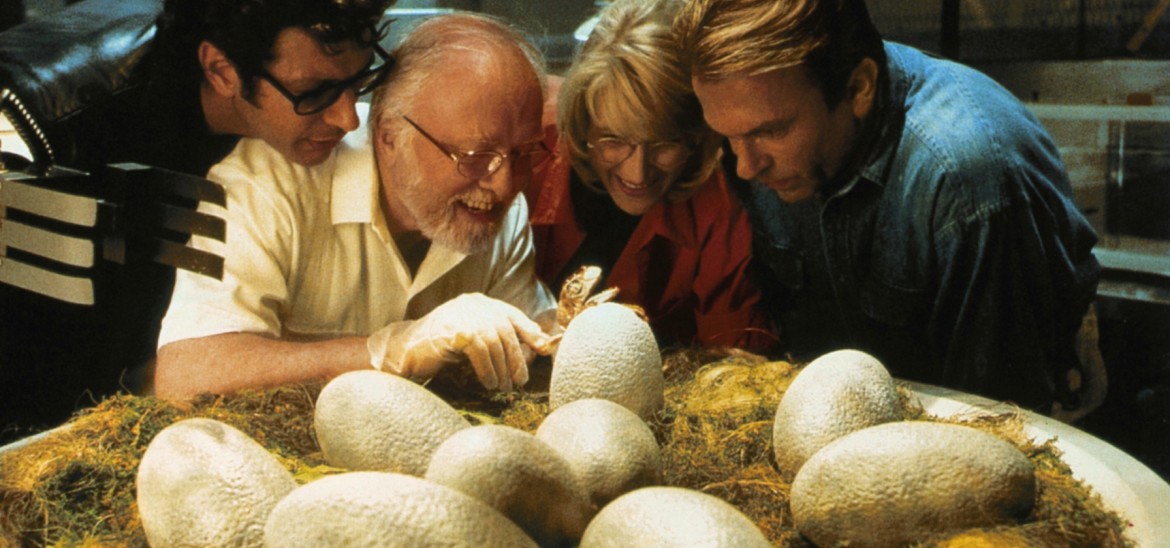Into Film Clubs
Find out everything you need to know about starting an Into Film Club.



The UK is amid a widely-reported STEM skills shortage and our film industry has not escaped the fallout. For example, Creative Skillset report that VFX employers are finding that new recruits are lacking skills in maths, physics and computational thinking.
To varying degrees across the globe, arts and sciences remain institutionally segregated as curricular domains and career paths. This is particularly acute in the UK, which has come in for some high profile criticism. Fortunately, initiatives seeking to address this cultural hang-up seem to be gathering pace.
Science is founded on creativity and critical thinking, and science lessons should provide an environment where learners can flex these skills as much as possible. Film and filmmaking are natural bridges between the arts and sciences - here are just some of the ways you can integrate them into your lessons:
Combining science learning with tablet or smart phone filmmaking - a world where young learners already have prowess - allows for fun and dynamic ways to explore the curriculum. Stop motion animation is a wonderful tool for visualising complex processes such as mitosis or particle theory. A short animation project provides a channel for your students' creativity allows them to take ownership of their learning and to develop their own physical scientific models. Additionally, the incremental nature of producing an animated film gives rise to opportunities for assessment for learning and discussion to address misconceptions along the way. For learners who are struggling to engage with science or communicate their ideas verbally or on the page, you may find that animation is an electric conduit for them to express their understanding.
Many films can be used to stimulate discussion on how science affects society and our lives; on how to evaluate claims based on science; and how scientific ideas have developed historically. We recognise these themes as the 'Working Scientifically' threads of the curriculum.
The Elephant Man can help learners understand and critique ideas of folklore and pseudo-science. Films such as Gravity, 2001: A Space Odyssey and Interstellar allow for analysing the scientific accuracy in science fiction, as well as visualising abstract theories of forces, motion and the universe. Some areas of science are regularly distorted, sensationalised or maligned in popular media, including film. The ethical debates that feature during lessons on, for example, gene therapy or genetic engineering, are complemented by scenes from films such as Gattaca and Jurassic Park. These can also be used to help young people learn to evaluate exaggerated or extravagant depictions of science.
Why not use this resource that I previously produced for the BFI exploring The Elephant Man
For some learners, drawing a graph can be a challenging and confusing exercise, producing an image that does little to elucidate the data they are working with. This can be especially true when producing distance or speed-time graphs, which raise their twin-heads in both the Maths and Physics curriculums. Using a high-octane chase sequence as the source material for your students' graphs makes for an entertaining 'active watching' data collection activity. Armed with a stopwatch, learners can record time stamps next to consecutive events and give speeds in a table, as they watch the scene unfold.
The nature documentary is one of the great cornerstones of science on film. An active film-watching session with your class can be a captivating learning opportunity that sparks fascination and boosts scientific literacy. Or why not make your own? Combining a unit of work on Relationships in an Ecosystem with a filmmaking project is a fun, challenging and collaborative way for students to access the topic and can raise some interesting questions: Did the filming process have an impact on the ecosystem in any way? Did the editing process represent the true sequence of events? If appropriate, learners can take up clearly defined roles in the production of the film, such as director, presenter and camera operator. A collective screening of the finished projects is also a chance for peer-marking and reviewing.
The period between completing a practical investigation in the lab and writing it up in the lab book can be a time where experimental methods become jumbled, observations become hazy and notes taken become misconstrued. Recording investigations on camera can help a learner take a step towards producing more accurate and detailed reports, particularly for extended or coursework-style projects. It is important to include any video equipment in a full risk assessment before commencing the investigation. This technique also informs discussion about the importance of having evidence to support claims based on science, a principle perhaps more important today than ever before.
Explore the themes of space exploration further with our Into Film Recommends podcast below, or log in to SoundCloud to download the podcast and listen on the go.
The Into Film Recommends Podcast Series is also available on iTunes.
A series of articles that highlight how the medium of film can be used to teach a wide variety of subjects and themes.
View other Articles in this columnViewing 4 of 6 related items.

Find out more about our streaming service, designed specifically for UK schools.